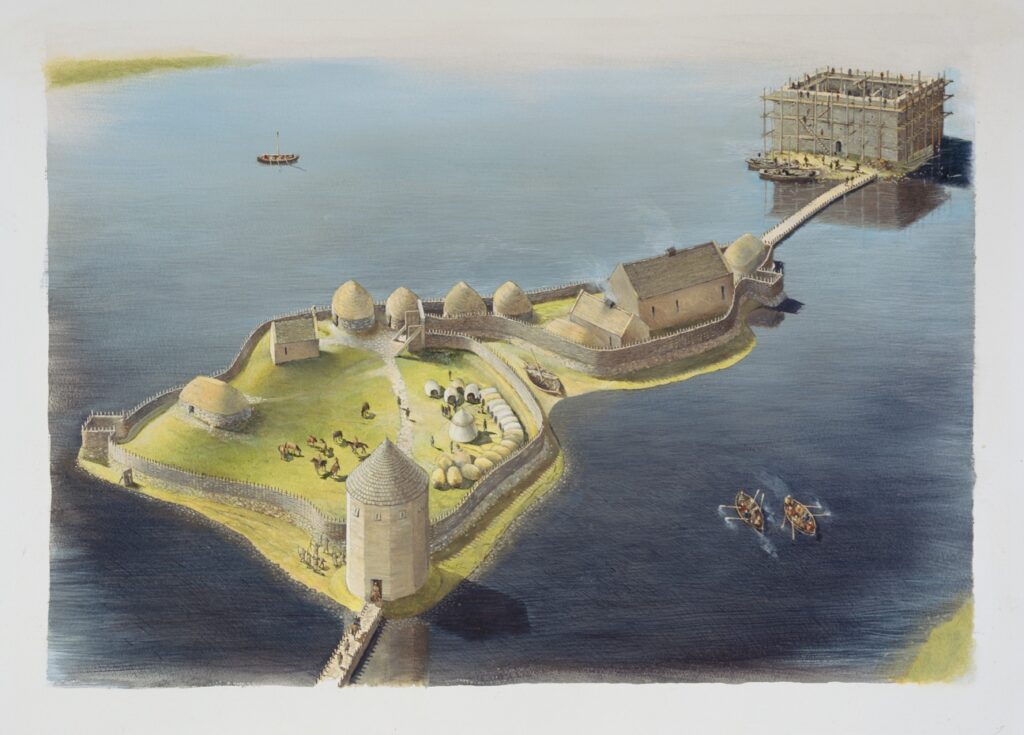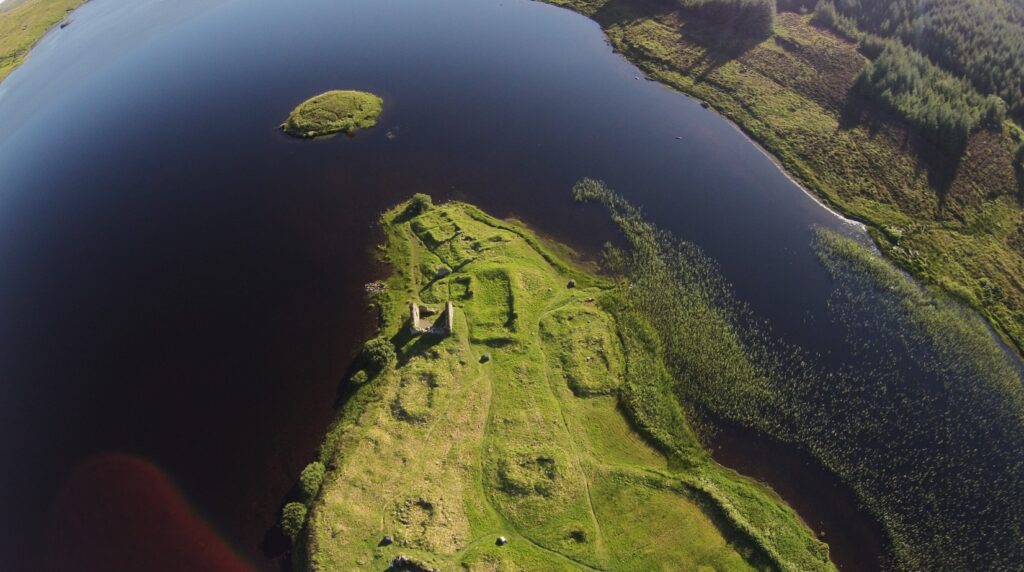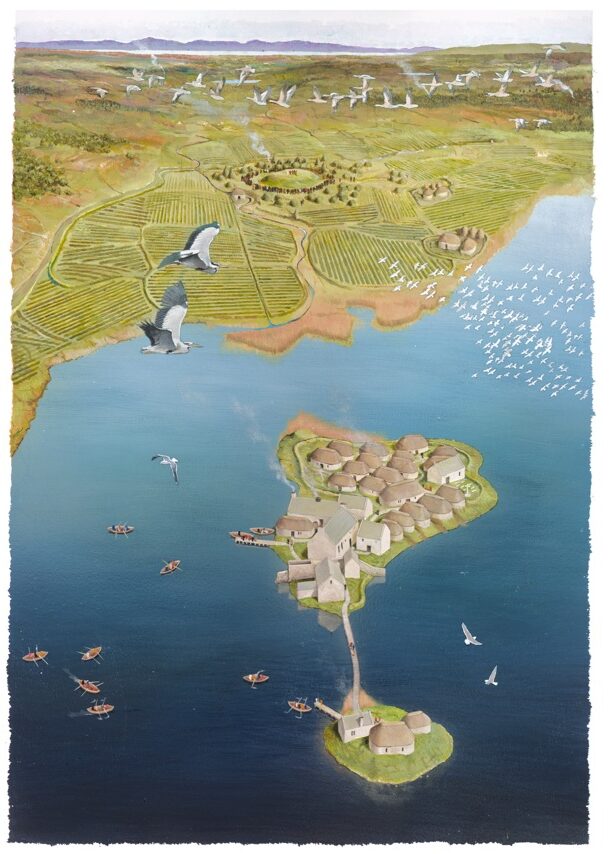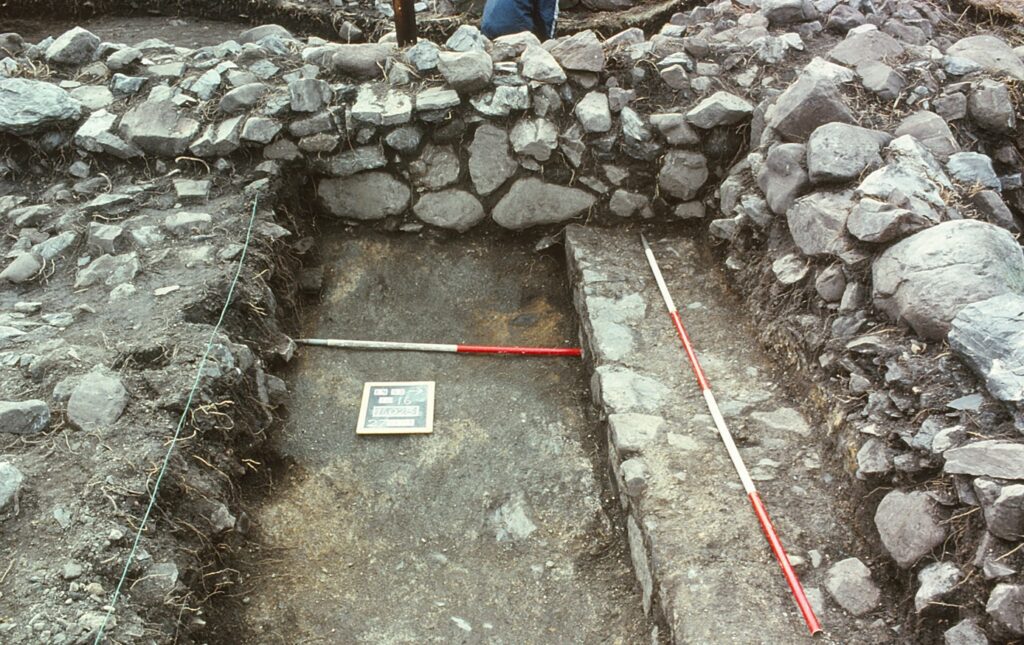News | Posted September 17, 2025
New Society Book Reveals Forgotten Medieval Kingdom and Nameless Royal Castle on Islay
Our new book reveals the results of major archaeological project at Finlaggan, on Islay off the west coast of Scotland, the site of a medieval kingdom’s centre of power and a previously unknown royal castle.

Visualisation of the castle at Finlaggan (© David Simon)
After nearly 30 years of analysis, The Archaeology of Finlaggan, Islay provides a comprehensive account and interpretation of the major archaeological research undertaken at the site from 1989 to 1998, including work by Time Team specialists in 1994.
The project was directed by Dr David Caldwell FSAScot, the Society’s President from 2014 to 2020, on behalf of National Museums Scotland and featured on an episode of the popular television programme.
The book by Dr Caldwell presents archaeological data which confirms that Finlaggan was the centre of power of the Lordship of the Isles, a quasi-independent state of political and cultural importance in the 14th and 15th centuries.
In addition, it reveals the existence of a previously unknown and unnamed castle at Finlaggan from the 12th and 13th centuries which demonstrates that Finlaggan was also a centre of importance in the earlier medieval period.
Finlaggan and the Lordship of the Isles
With control of the islands off the west coast, Argyll and the vast earldom of Ross in the Highlands, the Lords of the Isles were powerful chiefs with royal pretensions, treating with English and Scottish kings as if they were on a par with them.
They referred to themselves as ‘Ri Innse Gall’ (‘King of the Isles’) in Gaelic and have long been recognised by historians as an important phenomenon, a serious challenger to the Stewart dynasty for control of much of Scotland.
It was believed that the two islands in Loch Finlaggan were the centre from which the MacDonald Lords of the Isles inaugurated their own kings or lords, were advised by a Council, and exercised authority from around 1300 to 1500 AD.
However, the historical record for the site itself is meagre and there are no contemporary medieval documents which specifically identify it as a place of any importance.

Drone photograph of Finlaggan (Credit – Open Virtual Worlds at University of St Andrews www.openvirtualworlds.org)
Archaeological Evidence for the Centre of the Isles
Today it has been revealed that archaeological data presented in our new book backs up historical accounts and traditions and confirms Finlaggan’s role as the ceremonial, administrative and judicial centre of a medieval kingdom.
Evidence includes several mounts and keys that belonged to caskets which are thought to have protected documents and other valuables, and the remains of the council house, mentioned in a 1549 account, where meetings of the Council of the Isles took place.
In addition, the book reveals that the main island was accessed by boat to a jetty from which cobbled paths lead to the main buildings, including a feasting hall, chapel and private accommodation, and to a causeway leading to the council chamber on the smaller island. This would have been an ideal layout for ceremonial events.
The Archaeology of Finlaggan, Islay also details evidence of a palatial complex with a chapel, which are only usually found at royal castles and palaces, and a large and imposing great hall, demonstrating the leadership and regal pretensions of the Lords of the Isles.

Visualisation of later medieval Finlaggan (© David Simon)
A Nameless Royal Castle at Finlaggan
Furthermore, the book traces the possible origins for Finlaggan as a centre of power and ritual back across millennia: from prehistoric times, to a potential thing (assembly) site in the Viking age, to a previously unknown royal castle belonging to 12th– and 13th-century kings of the Isles, the ancestors of the MacDonalds who rose to the height of their power in the 14th and 15th centuries.
Archaeological evidence reveals that a unique castle occupied two islands in Loch Finlaggan: a large stone tower on one, which provided living quarters and extra security for the king or lord, and one or more courtyards on the other, containing kitchens, a chapel with a burial ground, houses, workshops, and a great hall where feasting took place.
The tower is estimated to have been approximately 19 by 19m overall (21m square including a plinth), making it comparable in size to stone keeps in England like those in the castles of Carlisle, Bamburgh and Lancaster.
As the erection of large rectangular stone towers was essentially limited to great Anglo-French lords and kings in Britain and Ireland, the castle can be interpreted as a political statement, as well as a sign of the wealth and connections of the ruling class.
The castle may have been dismantled because it was structurally unsound or due to enemy action before the palace at Finlaggan began to take shape in the 14th century.

Remains of the castle at Finlaggan (Credit – Dr David Caldwell FSAScot)
Author Dr David Caldwell FSAScot said:
“I am privileged to have led a skilled and dedicated team of specialists and volunteers on such an important project on a key place of national significance. The processing of all the data that was gathered has been a major part of my life since the 1990s and I hope I have not only provided an account of interest but also a basis for others to carry out more research in the future.”
Dr Helen Spencer FSAScot, Head of Research at the Society of Antiquaries of Scotland, said:
“As a charity, part of our mission is to share knowledge of the past with everyone, which is why we are especially grateful to our thousands of Fellows across the globe. Their subscription fees enable us to act as an independent academic publisher, making high-quality Scottish history and archaeology books more affordable and open access. If you would also like to support our work, please consider becoming a Fellow.”
The Archaeology of Finlaggan, Islay is available from our online shop, with a 20% discount for Fellows of the Society. Dr Caldwell will also be delivering a free public lecture on Finlaggan on Saturday 29 November in Edinburgh and online.
The Society of Antiquaries of Scotland gratefully acknowledges funding towards the publication of this volume from Historic Environment Scotland, National Museums Scotland, the Marc Fitch Fund, the Hunter Archaeological and Historical Trust and Finlaggan Single Malt Whisky.
